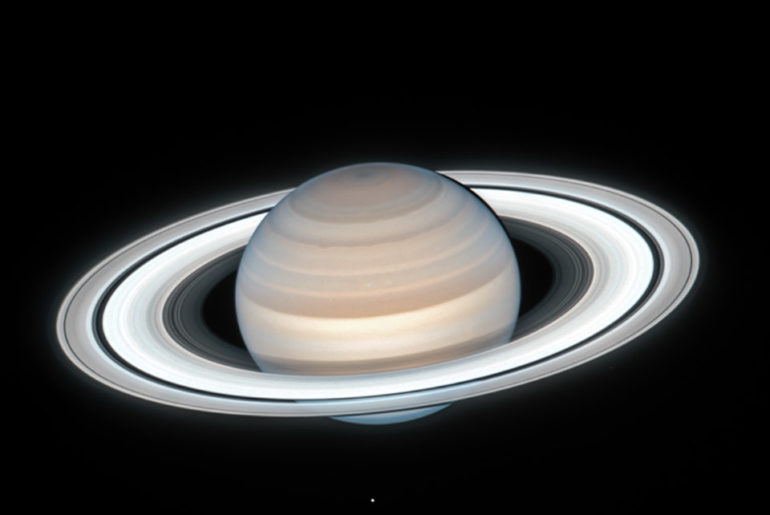
Photo credit: NASA, ESA, A. Simon (Goddard Space Flight Center), M.H. Wong (University of California, Berkeley), and the OPAL Team
NASA’s Hubble Space Telescope captured this stunning image of Saturn on July 4, 2020, when the gas giant was 839 million miles from Earth. It shows Saturn during the summer in the planet’s northern hemisphere. There’s a slight reddish haze over the northern hemisphere in this color composite, possibly due to heating from increased sunlight. This phenomenon could either change the atmospheric circulation or remove ices from aerosols in the atmosphere.
Saturn’s rings mainly consist of ice pieces, with sizes ranging from tiny grains to giant boulders. However, we still do not know how or why the rings formed. Researchers speculate that they could have formed during the age of the dinosaurs, as there isn’t a satisfactory theory that explains how rings could have formed within just the past few hundred million years.
- BRIGHT, SHARP VIEWS ANYWHERE: Unlike many beginner telescopes, this quality refractor features fully coated glass lenses and a 70mm aperture for...
- PERFECT FIRST TELESCOPE FOR BEGINNERS: Designed for adults and kids to enjoy together, this beginner-friendly telescope sets up in minutes and...
- EASY NO-TOOL SETUP: No complicated assembly or tools needed. The full-height tripod and telescope tube set up in seconds and pack neatly into the...
This image is taken as part of the Outer Planets Atmospheres Legacy (OPAL) project. OPAL is helping scientists understand the atmospheric dynamics and evolution of our solar system’s gas giant planets. In Saturn’s case, astronomers continue tracking shifting weather patterns and storms,” said NASA.





